Bevel Gears

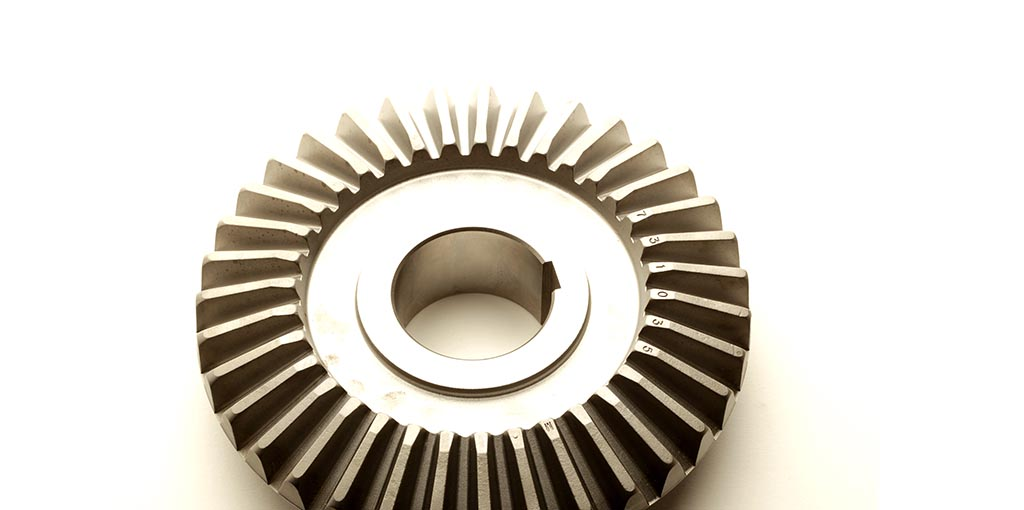
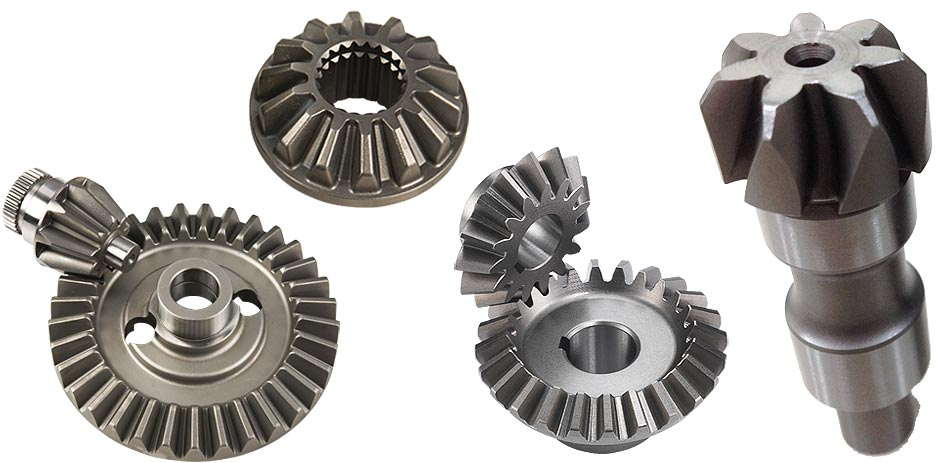
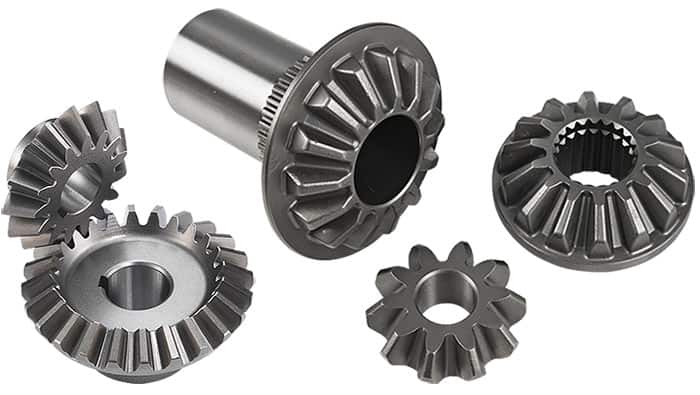
AmTech Manufacturing Solutions Guide Options
Our Handy solutions guide can help you determine what manufacturing process is right for your project or product.
Overview
Straight Bevel Gear, Spiral Bevels, Miter, Zerol, Anti-Back Lash Gears & more
Bevel gears are used extensively in a wide variety of industries and mechanical operations due to the most important advantage they offer: smooth and low-noise power transmission between non-parallel shafts at almost any angle or speed. However, due to the mathematical complexity of their design, manufacturing these gears is not an easy process.
AmTech OEM bevel gear manufacturer projects always begin production from a forging, bar stock, or another raw formed product such as a casting, depending on the strength requirements of the finished gearing. A forged blank is used when a superior strength to weight ratio, as well as better impact and fatigue resistance is necessary.
The required finish machining operations are then carried out, such as turning outer and inner diameters, grinding and other special machining procedures.
Finally, the last operation process involves the hard cutting of a gear. The whole gear is finished first and the pinion teeth are modified for optimum tooth contact along the profile and length of the tooth – by changing the curvature radius of the cutting blade. Once the tooth contact requirements are optimized, the gear is mounted for final inspection, including dimension checks, magnaflux or other specific inspections.
Spiral Bevel Gear Manufacturers
A Spiral Bevel Gear are used to transmit power between shafts that are at a 90-degree orientation to each other. Also, these custom parts are engineered with precision teeth which have a unique curve and are oblique in shape. The teeth have one concave, one convex side, feature a curve and have a spiral angle. This spiral angle is located from the tooth trace and pitch cone, resembling a helix angle that is located in teeth of helical types.
Since spiral bevels are not offset, less sliding occurs within gear teeth. This results in a low temperature operation with more efficient functionality than hypoid gearing types. Also, since there is a large amount of tooth surface this allows for greater interlocking during the rotation process. Because of this overall efficient operation, our custom spiral bevel gears are perfect for high speed, high torque transmission and power generation application types.
Spiral Capabilities:
- M2 to M15
- Maximum outer diameter is 600mm
Zerol Bevels
Zerol bevel gears are basically the same type of product as spiral types. The only important variation is the spiral angle of the zerol bevel teeth are machined to zero. Also, the teeth are manufactured to have a gradual curve with both a convex concave side. Also this type of gear operates in a similar fashion to a gearbox’s straight bevels gears, but are cut and finished with high precision equipment for extremely tight tolerances and surface finishing.
Materials
- 35
- S50C
- QT450
- 45#
- HT250
- S45C
- O8AI
Applications
- Automotive
- Construction
- Electrical
- Electronics
- Heavy Equipment
- Industrial Machinery
- Marine
- Medical Devices
- Off-Highway
- Pneumatics
Services
- Casting
- Climb Hobbing
- Conventional Hobbing
- Forging
- Grinding
- Heat Treating
- Honing
- Flame Cutting
- Lapping
- Milling
- Shaping
- Shaving
Dependable Gear Manufacturing
The AmTech Edge in Gearing
AmTech is distinguished by its internationally recognized certifications, extensive expertise, and a comprehensive global manufacturing network, positioning it as a leading choice for specialized gear production.
Specialized Services
AmTech excels in delivering precision-crafted bevel gears, helical gears, plastic gears, ring & pinion sets, spur gears, and worm gears, leveraging advanced investment and die casting techniques, as well as expert machining and forging processes.
Focused Expertise
AmTech is committed to providing top-quality gears, including customized bevel, helical, plastic, ring & pinion, spur, and worm gears, catering to the specific needs of original equipment manufacturer (OEM) partners.
Global Manufacturing Network
Address supply chain complexities confidently with AmTech's integrated and expansive international production network.
Industry Experience
With two decades of specialized experience, AmTech offers unparalleled reliability in OEM gear manufacturing, ensuring premium quality and precision in every product.

Presentation
Download our Presentation
Get a deep dive into our capabilities with our detailed presentation
—your guide to precision engineering, quality assurance, and seamless production timelines.
Fill out the form to instantly download your copy and explore how we can elevate your projects!
Download Our Presentation
"*" indicates required fields
FAQ's
Frequently Asked Questions
Can you make prototypes?
Absolutely. Amtech OEM offers comprehensive rapid prototyping services. Our capabilities extend to producing custom prototypes using advanced techniques like 3D printing and precision machining. This service is crucial for validating design and function before mass production. We work closely with our clients to ensure prototypes meet stringent specifications and industry standards.
Will you help us in the design stage?
We're dedicated to collaborating with you in the design phase, offering value-add engineering services for manufacturability, material selection, and technical feasibility. This ensures cost-effective, high-quality designs for your industry.
What is the lead time for samples?
We strive for prompt sample delivery. Our process includes a comprehensive review of design specifications, selection of optimal manufacturing methods (such as investment casting or precision machining), and quality control. This ensures that our samples promptly and professionally reflect the standards of full-scale manufacturing.
Will you inventory our parts?
Yes, inventory management is a critical component of our service offerings. We employ a Just-In-Time (JIT) delivery system to optimize supply chain efficiency. This approach reduces inventory costs for our clients and ensures timely delivery, aligning with lean manufacturing principles.
What is the turnaround time for quotation?
We typically provide a quotation within 7-10 business days, depending on the project's complexity. Upon receiving an initial inquiry, we respond within 24-48 hours to arrange a detailed discussion about the project requirements. This discussion helps us understand the technical details, volume, and specific needs of your project, allowing us to provide a precise and comprehensive quote.
What kind of quantities do you produce?
AmTech OEM excels in catering to diverse production volumes, from mid to high-volume manufacturing. Our processes prioritize flexibility, allowing us to adapt to varying demand levels while upholding high standards of quality and efficiency.
What kind of quality standards do you have at AmTech OEM?
Our commitment to quality is unwavering. IATF16949, QS9000, and ISO 9001 certified production facilities. Our Quality Department employs advanced technology and stringent processes to meet diverse and demanding industry requirements. Whether for large OEMs or family-owned businesses, our goal is to deliver exceptional product quality tailored to each client's specific needs.
Can you provide 3D printing samples?
Yes, we have invested in cutting-edge 3D printing technology to offer a wide range of sample production options. This capability allows us to provide rapid and detailed prototypes, aiding in design validation and iteration. We encourage inquiries about our 3D printing capabilities to explore how we can best meet your prototyping needs with our advanced technological resources.
Other Capabilities
Related Projects

Truck Transmission Gear
AmTech manufactures this truck transmission gear for a OEM customer in the Semi-Truck industr
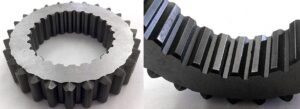
Transmission Spur Gear
This transmission spur gear is roughly the diameter of a large beverage can and weighs 1.04 l
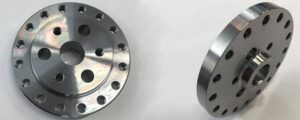
Supercharger Gear Hub
AmTech manufactures this steel gear hub for a large TIER 1 in the Automotive industry. Gea